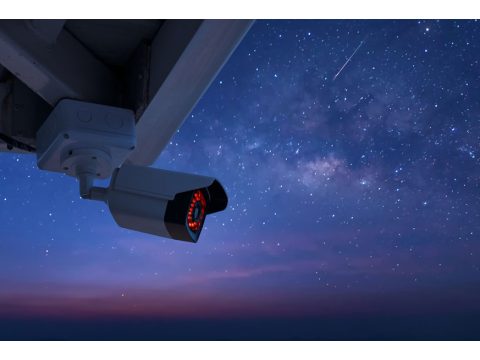Night Surveillance Cameras: Everything You Need to Know
Night surveillance cameras are designed to provide clear video monitoring in low-light and complete darkness. Leveraging infrared (IR) technology, these cameras ensure security around the clock. Here's a detailed guide on selecting and setting up cameras for optimal nighttime performance.
Choosing the Right Camera for Night Surveillance
Monochrome vs. Color Cameras
- Monochrome Cameras: Ideal for night surveillance due to higher sensitivity in low-light and IR conditions.
- Color Cameras with IR Filters: Choose cameras with mechanical IR filters for better image quality over models using electronic "day-night" switching.
Key Factors to Consider:
- Reflective Properties: Objects reflect differently in visible and IR spectrums, potentially causing visual distortion.
- Weather Conditions: Snow, rain, or fog can significantly impact image quality during nighttime monitoring.
- Spectral Compatibility: Ensure the camera's spectral sensitivity aligns with the IR lighting's wavelength for optimal results.
Hidden Night Surveillance
Challenges:
Infrared lighting, especially at the lower end of the human visual spectrum, can sometimes cause visible glow from IR LEDs, compromising stealth.
Lighting Options:
- Integrated IR LEDs: Positioned around the camera lens.
- Cons: May cause internal reflections, leading to reduced image clarity and potential overheating of the camera.
- External IR Units: Mounted on or near the camera for improved lighting without internal reflections.
- Standalone IR Projectors: Offer the best coverage and flexibility, especially for monitoring large areas.
Understanding Range and Coverage
IR Range Limitations:
- Realistic Expectations: Manufacturer specifications often overstate range. Field testing is recommended.
- Beam Alignment: Match the IR light's beam angle with the camera’s field of view for uniform illumination.
Power and Multiple Sources:
- Large areas may require multiple IR units aimed at different zones to ensure comprehensive coverage.
- Higher power is needed for broader angles, especially in outdoor setups.
Tips for Effective Nighttime Monitoring
- Combine Lighting Sources: Pair cameras with external IR projectors to extend range and improve image quality.
- Test Before Deployment: Assess the coverage area and image clarity in real conditions, especially during bad weather.
- Angle Optimization: Align cameras and lighting sources to minimize blind spots and maximize visibility.
Conclusion
Setting up night surveillance cameras requires careful consideration of camera type, lighting, and environmental factors. Monochrome cameras or color models with mechanical IR filters, paired with external IR lighting, ensure the best results for nighttime monitoring.
Whether securing a small property or a large outdoor area, leveraging the right equipment ensures reliable 24/7 surveillance, offering peace of mind and enhanced security.

